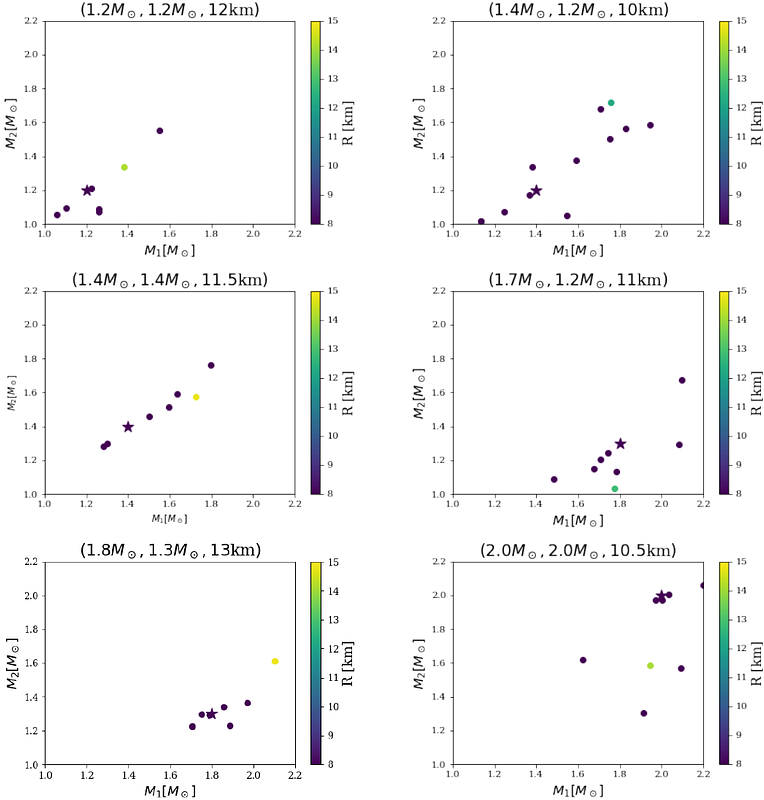The impact of binary neutron star outflow mass models on kilonova parameter estimation

The impact of binary neutron star outflow mass models on kilonova parameter estimation
Amelia Henkel, Francois Foucart, Selah Melfor, Samaya Nissanke, Alexandra Wernersson, Uddipta Bhardwaj
AbstractThe ejecta from binary neutron star mergers, which powers its associated kilonova, can inform us about source properties, merger dynamics, and the dense nuclear matter equation of state. While now in the era of multi-messenger astronomy, we remain more likely to observe purely electromagnetic (or purely gravitational-wave) signals due to the duty cycle and maximum observing distance of gravitational wave detectors. It is thus imperative to be able to perform high-accuracy parameter inference of purely electromagnetic detections. Here, we use a collection of ejecta formulae in an end-to-end analysis to generate mock multi-wavelength kilonova signals and recover the intrinsic merger parameters. By generating mock light curves for a broad range of possible mergers and with a variety of ejecta models, and then performing parameter estimation with different ejecta models, we measure how reliably and consistently we can use the 'map' between intrinsic and outflow properties provided by the formulae to gain source (intrinsic) information from purely electromagnetic detections (observables). We find that the posteriors probability densities are prone to biases when we vary the choice of reference model for our sampler, especially away from the best studied region of the binary parameter space, i.e. near equal mass, low mass binaries. This highlights both the need for improved models for the mass of the ejecta, and the need to exert caution when performing parameter estimation with a single mass model. We also find that most models predict that parameter degeneracies in kilonova light curves are largely orthogonal to those measurement observables, such as the chirp mass, from gravitational wave signals, indicating that kilonovae may provide a lot of additional information even in multi-messenger observations, if better modeled.